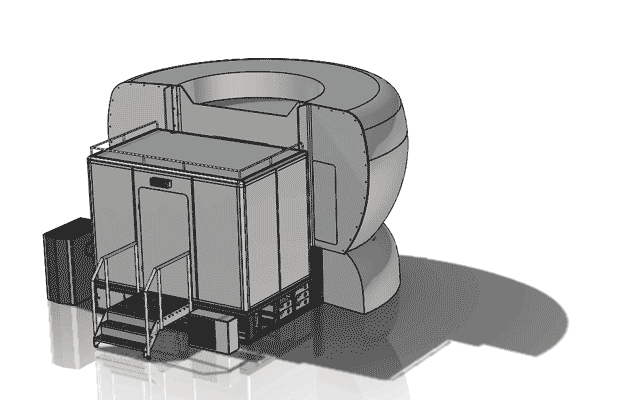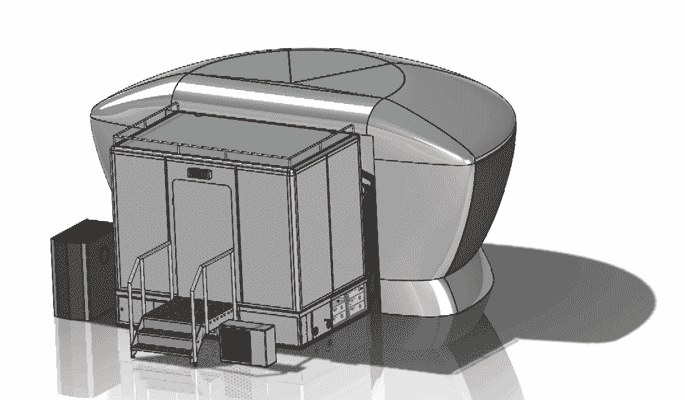Airbus and many others have recently indicated their interest in the use of new technologies during training, especially focusing on augmented reality (AR), virtual reality (VR) and mixed reality (MR). In this blog post, I will delve further into this idea from both a regulatory as well as a training perspective.
Augmented reality refers to a technology in which virtual objects are digitally placed in the real world. For AR the objects need no true user interaction and instead only enhance worldly surroundings. This could look something similar to live airplane data being displayed through special glasses while pilots are in the cockpit. In virtual reality technology and simulations, a user is fully immersed in a digital world and no real-world objects are present. Mixed reality refers to a combination of the above two where the real-world and digital world are compounded and require interaction simultaneously. All three of these technologies are still cutting edge in the aviation industry and we will soon begin to see corporations integrate them into daily operations.
Airbus in particular is ahead of the curve. They will soon be introducing a virtual way to put pilots into the cockpit of the A320 to practice procedures when simulators are not available. It will not replace simulator training but rather complement it. According to an Irish Times article, all that is needed for this VR technology is a computer, a commercially available VR headset and a pair of hand controllers which makes it very accessible to pilots. Airbus also noted in a recent press release that due to the nature of the technology, pilots will be able to study practically anywhere and can even work through a simulation together with other crew members who can be remote. The same or very similar technology will likely also be used by Airbus to aid mechanics, engineers and others in the manufacturing and maintenance processes of aircraft.
As many of you know, I am involved in several regulatory activities where aviation experts from all different fields and backgrounds are looking into the future of aviation training. Together with the Dutch Aerospace Laboratory, the EASA Rulemaking Task 0599 I chair has authored a paper on Aviation Blended Learning Environment (ABLE). This is something I speak about often and have also covered in a previous blog. Our work is progressing within EASA and the opportunities this approach to training will offer to organizations and regulators alike are many: getting away from the current stranglehold of approved devices like the Full Flight Simulators, optimizing the natural way of learning of current generations, aligning with other fields outside of aviation, attracting new entrants into the profession by using modern tools and so forth.
Current aviation training is old-fashioned. Its logic and setup dates back to times past and the availability of new tools such as VR glasses provide exciting new opportunities. As Einstein supposedly stated, “doing the same thing and expecting a different result is the definition of insanity.” Therefore, I applaud these modern initiatives, but based on my personal and regulatory experience want to add some caution in the current approach.
We must be careful that we are not getting enticed by a new tool only to make the same mistakes we have in the past. Tools should not drive a task. Instead, a task needs to drive the tools. In other words, don’t start with a new tool and see what you can do with it. Instead, start with the training objective you want to reach and identify the requirements the tool must meet. It is essential that we are not getting enticed by the new technologies only but that we keep an open mind to make sure flight training is reaching its optimum. Anything that can accurately be taught by using a tool specifically designed for the task might lead to higher training value but it should always be weighed against the usefulness. Ultimately, the addition of tools not available in the aviation training market should stem from creative design and development that is task oriented.
Based on the research by learning specialists and the fact that the basis for aviation training has seen very little changes and optimization since the 1980s, I believe we should move away from our current approach to training which is built out of 2 (or maybe 3) building blocks: theoretical, practical in a non-FFS and practical in an FFS, and create an ABLE-based approach to training. Furthermore, the current training is most focused on achieving a pass on the flight, skill or rating test rather than to teach the Competencies required to operate a modern aircraft. Of these Competencies (ICAO defines 8, others use knowledge as a 9th), only 2 are directly related to operating the airplane: Aircraft Flight Path Management – Manual and Aircraft Flight Path Management – Automation (as a small side note, I personally believe this should be a single competency, Aircraft Flight Path Management, where the use or non-use of automation is based on decision making, situational awareness and workload management but that is not relevant to this blog). The other 6 identified competencies are competencies we find in life and many other professions. These are communication, leadership and teamwork, problem solving and decision making, application of procedures, workload management and last, situational awareness (which in my opinion is a questionable competency as well, especially as it is difficult to objectively measure). It would behoove us to therefore investigate the training of related professions, such as the medical, marine, military and nuclear fields, to see how we can optimize the development of these competencies in a data-driven manner. It is clear that at least part of these competencies do not necessarily require use of the aviation training tools that are currently used.
Lastly, I want to caution about an unintegrated approach to new aviation equipment in the shape of AR, VR and MR. Even though some of the existing technology that is available could be valuable for creation of aviation training tools, we must ensure that a coordinated approach to new training methods are developed with backing of science and data. This should encourage an integrated solution from start to finish, with tools supporting learning rather than meeting the compliance of the regulations only. This certainly is a large task ahead of us and I applaud the early adaptors such as Airbus.
At MPS we are concurrently integrating new technology into our flight training offerings. This starts and ends with the customers. For example, our technology provides the possibility to learn and practice a skill in one device without having to duplicate the same thing in another, therefore gaining valuable training time. More options such as AI data gathering, optimization of booking and other ancillary training tools are also fully integrated in our offerings and can be selected by our customers.
We are looking forward to working with you on an integrated approach to your training needs and similarly look forward to new technologies such as AR, VR and MR becoming part of the aviation world.
If this leads to any questions, please contact me or my team. We would be happy to support you in reaching higher training goals.


